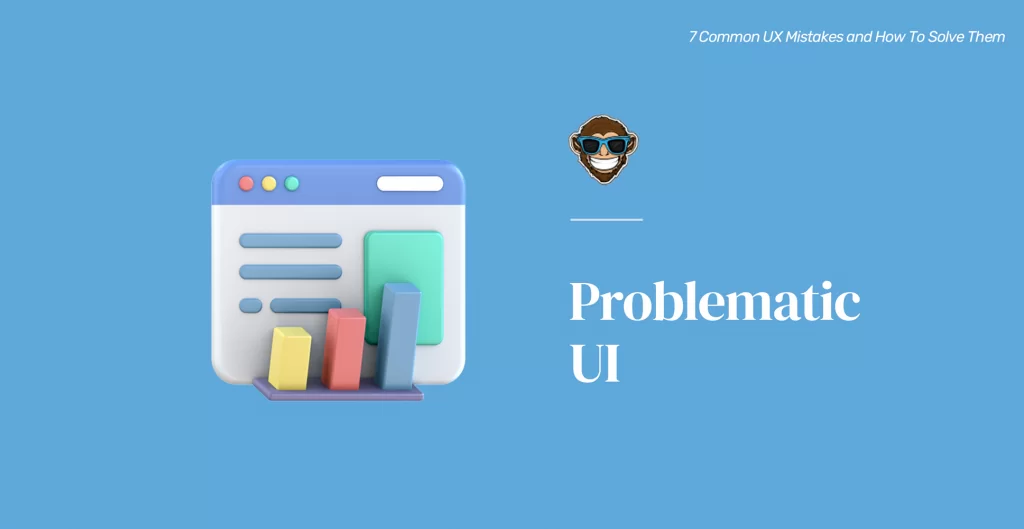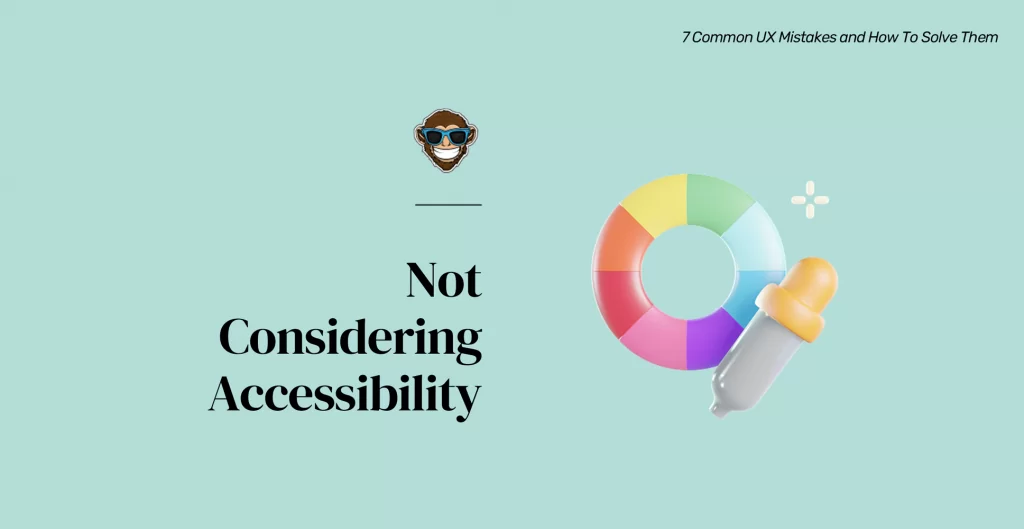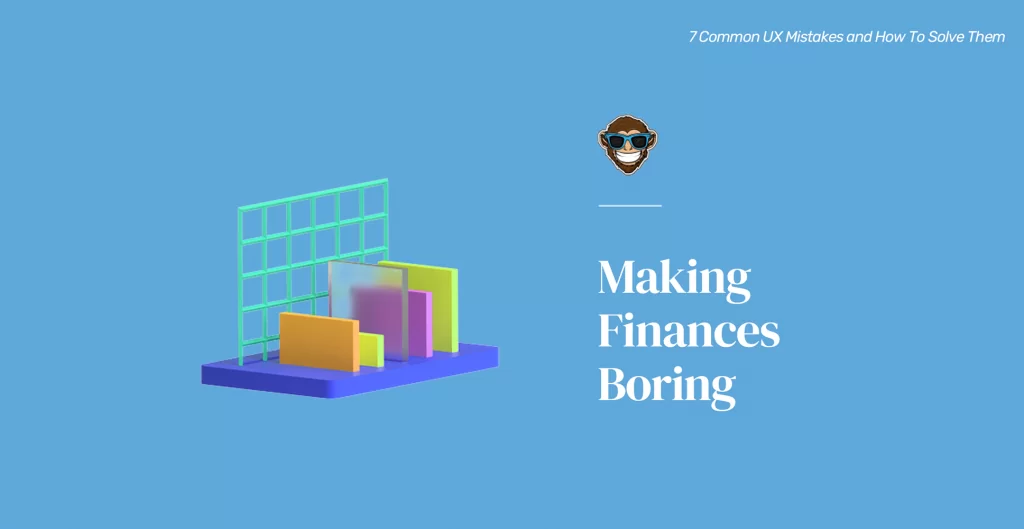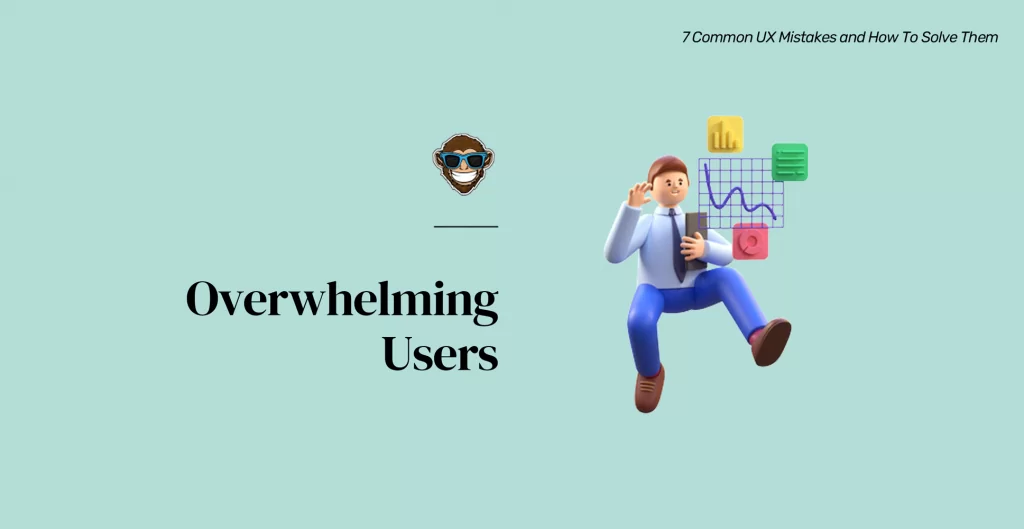Fintech apps have taken over mobile financial services, and competition is getting fierce. As a result, FinTech app developers must ship outstanding apps that capture and retain users. Hence, avoiding UX mistakes is crucial to remain competitive in the growing FinTech market.
Over two decades ago, Bill Gates said: “Banking is necessary; banks are not.” Whether you see it as an omen or not, the truth is that statement closely resembles the current state of affairs of the banking industry. Pressured by the pandemic, most financial institutions and businesses have started looking at modern monetary and banking processes from the mobile angle. Traditional banking’s reign over how we handle our finances has ended, and new banking channels are starting to vanish the outdated conception of old banking. Bank branches and in-person transactions have stepped down to welcome 24/7 online banking. This phenomenon ignited an uprising of financial technology, or FinTech, startups that have sped up the innovation efforts within the entire financial system. As a result, FinTech app developers now have their work cut out for them due to FinTech apps popping up left and right and becoming cardinal for startups, banks, businesses, and customers alike. This has highlighted the importance of UX design.
As of February 2021, there were 10,605 Fintech startups in the Americas, and 46% of people prefer to use digital channels for their financial needs. Under the current conditions of increasing competition and the proliferation of mobile apps, FinTech startups can’t afford to lose clients by having mediocre mobile products. On the other hand, app developers can’t afford to deliver a mediocre product, let alone make crucial design mistakes. Because FinTech apps have transformed the way we handle our finances and access a myriad of financial services, the mobile tools we use to access said services must work seamlessly. For this reason, it’s imperative for app developers to ensure the user experience (UX) design of their apps is flawless. Making UX mistakes might mean losing valuable users who don’t feel your app fulfills their needs. If not, it completely defeats the purpose of FinTech: simplify the user’s financial management experience. That’s what this article is about: explaining the most common UX design mistakes and how to ensure that your FinTech app avoids them.

UX Design for FinTech Apps
Before we start digging into the most common UX mistakes, we think it crucial to provide some context regarding the main requirements of FinTech-focused UX design. As you already know, every project is unique and, depending on the industry, client requirements, and target audience, each app needs different features, UX/UI design, requirements, and development processes. Mobile apps must be clean and straightforward for the financial services industry while addressing client needs in an efficient, easy-to-understand manner. You may think: “Well, of course! Every design should be easy to understand while addressing user needs.” Believe us; you’d be surprised to see how hard it is to implement simple yet effective UX design in FinTech apps. The world of finances isn’t easy, neither for users nor for the people on the corporate side of the banking spectrum. Again, it depends on your target audience, but most users of FinTech apps don’t make sense of banking and financial, technical terms or may not understand what specific data or numbers mean. Some others may not even be tech-savvy, and most of your users may not know how to manage their finances online while keeping their data and access tokens safe.
For this reason, FinTech requires app developers to pay special attention to FinTech-specific UX design elements. This way, they can ship FinTech apps that fulfill their users’ needs while also pushing boundaries to remain competitive in the growing market. Some of these UX elements are:
- Text and Terms: The text and the terms employed within the app must be understandable for everyone, regardless of their financial or educational background. The complexity of the economic field must not be transported to the app. All the terms should remain as clear, simple, and straightforward as possible.
- Simple User Interface (UI): Elements like the color palette, background, fonts, chars, text alignment, flows, and buttons, among others, are crucial to providing simplicity and attractiveness. Buttons, icons, and logos must match the background. The date formats must be appropriate to the country of usage to avoid confusion. The overall feel and look of the app must communicate what the brand is about while simplifying goal-reaching and maintaining the app’s simplicity. Also, keep in mind that the transparency of your app’s UI design and the information within the app is crucial for establishing a durable trusting bond with your users. On that same note, your app’s sophistication and finesse will convey trustfulness and ease of mind regarding the reliability and usability of your mobile product. As a result, your users will trust your app and keep using it, which is ultimately any mobile product’s primary goal.
- Security: Security is, by far, the most critical part of designing a good FinTech app. Ensure to incorporate the necessary steps and authentication process that safeguard user data while maintaining simplicity and user-friendliness.
- Gamification: As people are usually wary of banks and finances, gamification is a fun way of engaging with them while making sure they learn how to use the app. Gamification helps users understand some terms and makes financial matters less stressful and tiresome.
- Friction: In UX design, friction is anything that prevents or slows down users from accomplishing a goal. In FinTech apps, some friction is crucial to prevent users, especially non-tech savvy ones, from making transactions by mistake.
So, whether this is your first time creating a FinTech app or you’re already an experienced developer, you must acknowledge that the UX elements of your app must cater to a specific audience. It’s tempting to get carried away in excitement to build a “perfect” app full of features but keep in mind your users, in most cases, will only care about reaching a goal; the more accessible, the better. However, we’re all bound to make some mistakes. Henceforth, it is crucial to acknowledge these mistakes and find ways to avoid them in the future to ensure our industry keeps delivering the cutting-edge technological innovations that keep driving it forward.
7 Common UX Mistakes and How To Solve Them

1. Not Doing User Research
As with developing any app type, understanding exactly who you’re building for and what need–or needs–you have to address is the crucial first step. For instance, who are your users? What problems are they trying to solve? Where do they live? How old are they? These, and more, are crucial questions to ask yourself when properly determining the goal of your FinTech app and its UX. However, we often see corners being cut in regards to performing user research. I mean, it seems like a simple way to shave off a few thousand bucks and a couple of weeks, right? Unfortunately, omitting user research yields the opposite result in every single case: more money and time will be spent fixing and redirecting your app in the long run.
So, whether your client asks you to avoid user research or you think it isn’t that important, the fact is that user research is a non-negotiable requirement. Your users will interact with your Fintech app according to who they are, their problems, and their needs. You must understand those things perfectly to build accordingly and make the necessary implementations to meet those needs; nothing more, nothing less. Remember: people tend to gravitate toward mobile products that closely line up with their needs. If you don’t understand those needs, you’ll move into your app’s implementation and UX design phase with confusing and complex interfaces for your users.
You will also end up with no direction for your development processes and will likely end up implementing unnecessary and costly functionality that fails to meet anyone’s needs. And because finances are complicated as it is, building a complex FinTech app will only confuse your users further and, when released, your app will surely go unused or result in complaints. The amount of money and effort you’ll have to put into fixing these mistakes and re-releasing your app will be significantly higher than if you had conducted your user research in the first place. All your work, your team’s work, your client’s budget, and your company’s reputation will go down the drain.
Solution
According to AppsFlyer, in 2020, an average app lost about $57,000 a month due to uninstalls, and CleverTap says that one of the main reasons for uninstalls is poor user experience. See what the big deal is? User research provides an essential foundation for your app’s entire UX design strategy. It is the initial stage of your app’s design process and is one of the most significant phases of your FinTech app’s development life cycle. At Foonkie, we understand this fact and always make user research one of the fundamental pillars of our development practices.
To avoid wasting time and money developing a generic app that doesn’t have real value to your users, we suggest you always perform some kind of user research. It doesn’t have to be an expensive investigation with all the bells and whistles. You can choose research methodologies such as interviewing, field research, diary studies, focus groups, usability testing, A/B testing, or card sorting, among others. You can choose the one that suits you better, or combine two or more. Usually, any research methodology that lets you, or your researchers, gain insight, gather quantitative and qualitative data, establish behavioral patterns, and find problems, is enough. By following a specific research methodology, you will understand your users’ needs and concerns and identify how your app and its UX design can effectively solve those problems. Additionally, you can use the information you gathered to build your user journey maps and user stories to properly define your app’s features and functionalities and understand your users’ path within your app.

2. Problematic UI
After conducting your user research and getting a clear direction, the next–and arguably second most crucial step–is determining how your app will look; the actual UX design and visuals of your product. Much like your user research, your app’s UI design should follow a clear plan based on factual information and insights, and, most importantly, it should be intuitive and straightforward. Keep in mind that it doesn’t take much to complicate things when it comes to finances. One color that is too bright, one term that is too complicated, or one screen that displays too much data can cause your user to feel overwhelmed, and there goes your app. Similarly, having too many features usually requires your user to take too many steps to reach their goal, which can take a toll on your user’s cognitive load, especially for the non-tech savvy ones. And, if on top of that, you’re inserting a lot of images, fancy fonts, animations, pictures, videos, icons, and buttons, you’re making an already sensitive subject too complicated and overcrowded. So, here is our piece of advice: less is more. Make your UX flow successful by implementing a simple, clean UI.
Solution
Although there is no template or general rule for UI design, there are specific components that we feel FinTech app developers should not ignore:
- Consistency: Whichever color palette, font size, or background you choose, it should always be consistent. If your app has different color schemes, typography types, and differing icons and buttons, it will complicate things for your users. Ensure to continuously repeat the same patterns and maintain the style and feet throughout your app’s flows.
- Simplicity: Due to the complicated nature of the subject, you should go the extra mile to make sure your FinTech app provides clear and straightforward solutions that they can easily access and use. One-click transfers and payments, for instance, can simplify tasks that would otherwise take too long and require too many steps. Similarly, regardless of who your target audience is or the particular financial subject of your app, make sure to keep the features down to a minimum and make the overall design light and uncomplicated. Not only does this “lightness” promote ease of use, but it also helps prevent crashes and performance issues.
- Visual Cues: For FinTech apps, visual cues can help users ease confusion and act as reminders. Provide points of reference as they move through your app’s flows to remind them where they are and how they got there. Things like page titles or highlights for current navigation options can give users a view of where they are.
- Heatmaps: Heatmaps can help you gain insight into which app elements get the most attention. Using heat maps is extremely useful for optimizing your app’s interface, increasing your conversion rate, and addressing issues. They can also help you determine if your CTA is working if your users are clicking or swiping where they should, and it aids in delivering an overall good user experience.

3. Not Considering Accessibility for Your App’s UX
Accessibility is a crucial component of FinTech app UX because finances are a somewhat limiting subject for some people. Studies have shown that companies without accessible sites lose about $6.9 billion a year to competitors with accessible sites. If you did your research, then you’re probably aware there may be users with cognitive, physical, or other types of disabilities that, whether permanent or temporary, you need to consider during your UX design phase. If on top of that, you’re restricting access to certain parts of your app, you’re making a challenging subject harder. And, even if most of your users may not have any disability, you should still build your FinTech app to accommodate all of them regardless of their disabilities or situational barriers. Failing to do so can make some of your users feel left out, and your app’s adoption rates may suffer for it. Remember: accessibility has a substantial impact on UX because it is all about your users’ capacity to use your app.
On top of that, accessibility helps lay a solid foundation for inclusion. It is a way to empathize with your users, which helps build bonds and long-lasting relationships with them. Ignoring your app’s accessibility elements will limit the scope of your app’s reach and jeopardize its engagement rates.
Solution
Accessible UX design incorporates special features to help users with different disabilities navigate your FinTech app smoothly. Accessible UX design includes features that enable intuitiveness, flexibility, simplicity, reduced number of steps to achieve actions, and colors, sizes, and shapes appropriate for use and approach. To achieve all these elements of accessibility in your FinTech app, we suggest you make use of design elements such as:
- Color contrast: People with vision problems are bound to have difficulties reading text in your app if the contrast is too high or too low. For FinTech apps, this is crucial to avoid making transactional mistakes.
- Don’t use color for critical information: For users with visual impairment, using color-only cues to convey information within the app is impractical and even dangerous. To avoid confusion, always pair color cues with text or maybe even sounds to identify actions such as errors or successful transactions.
- Text-to-speech: If possible, implement text-to-speech functionality in your app to help people with visual impairments listen to lines of text. Also, insert alt attributes to images, so if a user can’t see the picture, he can hear what the image is.
- Zoom: Make sure to enable zooming options so your users can enlarge or reduce texts within your app depending on their visual needs.
Touch target size: Ensure clickable and swipeable icon sizes aren’t too large or too small to accommodate users with prominent and small-sized fingers. - Heatmaps: As stated earlier, study your app’s heatmaps and place your app’s most used icons or sections within reach.

4. Lack of Onboarding Optimization
First impressions are always critical. In app development, this statement is especially true. However, finding the proper balance for making good first impressions without overwhelming your users is tricky. You can implement a lengthy onboarding process to help your user discover the necessary features, which can be informative but boring. FinTech users usually want their apps to get to the point. They want to make the payment or transfer the money, no bells, no whistles. Yet omitting the onboarding process and asking for their financial information at once may not be the best way to gain their trust.
Onboarding is usually tied to your research because it will let you know, even if it is onboard terms, what your users tolerate, what they need, and what holds value for them. Furthermore, you need to always keep in mind that FinTech users are more demanding. They need your app to manage their finances so they won’t be forgiving. Failing to emphasize your app’s value proposition, over or underwhelming them, and not explaining the app’s features successfully will end up in-app abandonment. Therefore, creating an onboarding process that is immediately intuitive and informative while also introducing users to the most exciting parts is essential for your app’s successful first impression.
Solution
One of the most important things to consider when designing your app’s onboarding process is building trust. In FinTech apps and all financial matters, trust is the stepping stone to successful relationships with customers. So, your onboarding process must provide a space for building trust. To achieve that, try to give a simple video or animated demonstration of what the app does and how it benefits the user. Show a simple step-by-step guide of your app’s features, state your value proposition immediately, and try to engage users in interaction as soon as possible to avoid boredom. For instance, you can rapidly show your user where the transactional portal is, the icons and action buttons they need and ask them to try them by tapping them or swiping to engage them in the onboarding process. Try to avoid the obvious, though. For example, most users already know that a camera icon means they’ll access their camera. So, as long as your icons are standard and universally known, please don’t waste time explaining them.
Additionally, make the signup process as simple as possible. Depending on your app’s purpose, make it possible to rapidly–and securely–sign up using social media or Google, for instance, or check your research to figure out what signup option is more popular. Also, give users the option to link their bank account or credit cards to speed up future payments and transactions.

5. Not Having Proper Security Systems in Place
We don’t need to explain how crucial security is for FinTech apps and all financial services in general. However, studies show that banking apps are still vulnerable to attacks. A survey conducted by Check Point found that banking Trojan attacks that stole users’ mobile banking credentials rose by 15% by the end of 2020. For this reason, your FinTech app’s UX needs to have the security protocols to enable users to store and exchange their financial information securely while also ensuring compliance with government regulations. Remember, your users trust your app with their banking data, stocks, loan information, credit card pins, mortgage documents, and more. It is your responsibility as a FinTech developer to take the highest precautions to safeguard all that data and make sure that the security protocols you implement are robust enough to fend off hackers successfully. Like your user research, this point is non-negotiable. You simply cannot build a FinTech app without any security barriers in place. If you don’t, your users’ information will inevitably leak in, causing irreparable damage to their financial and personal stability.
Solution
Security is an integral part of your app’s UX. Without a sense of security, your app’s user experience will never be successful. Your FinTech must make your users feel safe. They need to know that their information is safe and won’t be mishandled. According to our experience developing secure FinTech apps, we suggest you consider these security practices:
- Secure coding: Weak coding can lead to security holes if you’re not careful and take a security-first approach and include it at every step of your development process. Include input validation, keep logs, monitor login attempts, and all transactions, enforce API and server security, establish access roles, and always have proper testing strategies in place.
- Encryption: Encrypting sensitive information is a must in FinTech apps. We suggest you employ encryption methods such as PKI, tokenization, and SSL certificates to make sure the information is only readable to the receiver.
- MFA: You must look beyond the traditional username-password authentication protocols and include Multi-Factor Authentication as the preferred login method for your FinTech app. You can combine usernames and passwords with emails, SMS, or OTPs. You can use 2FA as well, but MFA is more robust and adds an extra layer of protection. Biometric identification is also beneficial and has become the norm for most FinTech users with smartphones that allow it.
- Notifications: Include real-time notifications to alert users about any unauthorized login or transactional attempts.
- Regulatory Compliance: FinTech app developers must be well versed in any regulations of the region they’re functioning in, such as the GDPR, PSD2, or the PCI DSS. You must follow these regulatory measures regarding data collection, storage, and sharing to protect user information and avoid penalties.
- Blockchain: Blockchain technology is one of the most convenient ways of enforcing security in FinTech apps. Blockchain is tamper-proof and immutable, and its decentralized architecture makes it impenetrable and unhackable.
- Test: All of the security approaches mentioned above are useless if you don’t have proper testing strategies in place. Whether you choose automated or manual testing–or both–, checking your app for bugs and errors at different stages of your app’s development is crucial for delivering a secure FinTech app.

6. Making Finances Boring
One of technology’s most extraordinary things is making life more interesting, interactive, and fun. So, if FinTech is the marriage between finances and technology, why should it be boring? Going to a bank is already a tedious task, and if FinTech gives us developers a chance to take technology’s assets and make online banking more interesting, why not do it? On the other hand, if you focus on creating a FinTech app that fits the mold of traditional banking and doesn’t provide any incentive or value, your users will not engage with it. Additionally, your app won’t be adding anything new into their financial lives, so why should they download your app instead of another app? The difference lies in the extras that make your app a non-tedious, engaging way of managing their finances.
Solution
Making your FinTech app more interactive and fun can help your users engage and associate positive emotions with your app. Gamification is a very effective way of getting your users to interact with your app beyond just using it to pay for stuff. Gamification uses game mechanics in non-gaming scenarios, such as FinTech apps, to stimulate interaction and motivate users to keep using the app. It helps you lower entry barriers into the mobile financial world while also raising your users’ loyalty levels. On this last point, research shows that gamification helps increase user loyalty and makes it more likely for them to recommend the app to other people.
You can include elements such as a reward panel and build a points system where users get points per transaction and get rewarded when they reach milestones. For example, you can give rewards for trying new services when you implement them or give them points for sharing or rating the app. You can also add milestones when achieving particular personal savings or investment goals and even provide subscription discounts. Adding partnerships with other brands and offering services with them in exchange for points is also an effective way of increasing user engagement while broadening the scope of what users can do with your app.

7. Overwhelming Users
Hopefully, you already have rigorous wireframing and prototyping in place to ensure your app only has the necessary functions, and optimal user flows. However, the common misconception that feature-rich FinTech apps are better makes us touch on this crucial subject. Keep in mind that it won’t take much to make your FinTech app too complicated for your users, which is why, once again, user research is so important. Knowing who your users are will help you optimize your app’s UX for them. For example, your millennial users might find certain functions intuitive, while older ones might find those same features confusing. Additionally, cramming your app with features, icons, images, buttons, and add-ons will only lead to your users having a disorienting experience, exhausting their cognitive load, and make your overloaded app difficult to market. Henceforth, your FinTech app must only include the necessary features and display the essential data to accommodate all users and avoid exhaustion and confusion.
Solution
We can’t stress this enough: keep it simple. Aside from only adding the necessary features, you need to make sure your app’s entire UI design is as simplistic and calming as possible while still having the essential features to ensure your users reach their goals. Don’t use bright colors and complicated shapes, and font sizes. Furthermore, most finance apps often require to provide users with a considerable amount of data, which usually comes in numerical form and can be overwhelming for some users. So, when presenting said data, try to use graphs or dynamic forms to convey the message while keeping things straightforward. Try to avoid using financial, technical terms and giving documents or lengthy blocks of text to your users. It will only annoy and confuse them.
Additionally, keep in mind that, unless you’re developing a region-specific FinTech app, it’s safe to say you’ll likely be dealing with users from across the world. To accommodate everyone, you must make sure your app is versatile enough to reach users from all over the world. For this reason, you must provide translating and currency conversion options without overwhelming your users with numbers and mathematical equations; make it as seamless and unnoticeable as possible. That being said, you need to plan for the size of the text once the currency is converted. For instance, USD 2,000 will become COP 7’300.000, so make sure you design your app’s interface with those variables in mind and avoid cramming too many numbers into small spaces.

Final Thoughts
FinTech apps are booming; they are becoming a pervasive force in the world’s mobile banking endeavors. App developers are tasked with paving the way for FinTech apps to keep taking the banking world by storm. However, it’s understandable that for some, designing robust digital experiences and products for the world’s mobile banking and finance needs can be taxing and even frustrating in the beginning. The FinTech ecosystem encompasses a wide array of elements and complex concepts, situations, use cases, and standards that can be challenging for developers and users alike. Building wholesome and compelling user experiences for FinTech apps is a tricky business. Pacing up in the complex subject that is mobile banking, some mistakes are bound to be made. Nonetheless, FinTech app development companies are raising the bar in the Fintech arena and are constantly racing to provide the best FinTech apps for their users. Believe us, it may not always be easy or exciting, but it creates opportunities for innovation that will surely push the FinTech industry forward.
If you have questions, concerns, want us to work on your FinTech app, or are faced with complexities in your Fintech UX journey, we’re happy to help! Contact us!
